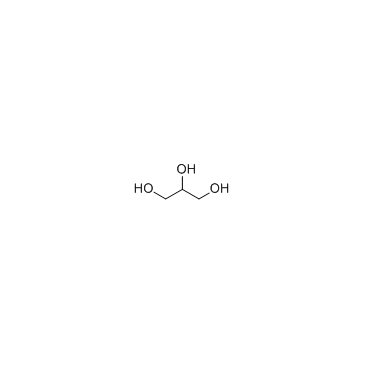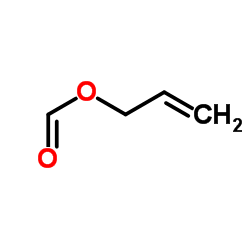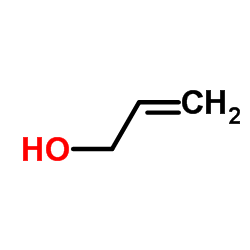Glycerol-d5

Glycerol-d5 structure
|
Common Name | Glycerol-d5 | ||
|---|---|---|---|---|
| CAS Number | 62502-71-0 | Molecular Weight | 97.12460 | |
| Density | 1.331 g/mL at 25ºC | Boiling Point | 182ºC(lit.) | |
| Molecular Formula | C3H3D5O3 | Melting Point | 20ºC(lit.) | |
| MSDS | Chinese USA | Flash Point | 320 °F | |
Use of Glycerol-d5Glycerol-d5 is the deuterium labeled Glycerol[1]. Glycerol is used in sample preparation and gel formation for polyacrylamide gel electrophoresis[2][3][4]. |
| Name | 1,1,2,3,3-pentadeuteriopropane-1,2,3-triol |
|---|---|
| Synonym | More Synonyms |
| Description | Glycerol-d5 is the deuterium labeled Glycerol[1]. Glycerol is used in sample preparation and gel formation for polyacrylamide gel electrophoresis[2][3][4]. |
|---|---|
| In Vitro | Stable heavy isotopes of hydrogen, carbon, and other elements have been incorporated into drug molecules, largely as tracers for quantitation during the drug development process. Deuteration has gained attention because of its potential to affect the pharmacokinetic and metabolic profiles of drugs[1]. |
| References |
| Density | 1.331 g/mL at 25ºC |
|---|---|
| Boiling Point | 182ºC(lit.) |
| Melting Point | 20ºC(lit.) |
| Molecular Formula | C3H3D5O3 |
| Molecular Weight | 97.12460 |
| Flash Point | 320 °F |
| Exact Mass | 97.07870 |
| PSA | 60.69000 |
| Index of Refraction | n20/D 1.472(lit.) |
| Storage condition | 2-8°C |
| RIDADR | NONH for all modes of transport |
|---|
|
~97% 
Glycerol-d5 CAS#:62502-71-0 |
| Literature: Maegawa, Tomohiro; Fujiwara, Yuta; Inagaki, Yuya; Monguchi, Yasunari; Sajiki, Hironao Advanced Synthesis and Catalysis, 2008 , vol. 350, # 14-15 p. 2215 - 2218 |
|
~61% 
Glycerol-d5 CAS#:62502-71-0 |
| Literature: Bersch, B.; Starck, J. P.; Milon, A.; Nakatani, Y.; Ourisson, G. Bulletin de la Societe Chimique de France, 1993 , vol. 130, p. 575 - 583 |
|
Anomalously large isotope effect in the glass transition of water.
Proc. Natl. Acad. Sci. U. S. A. 111(49) , 17402-7, (2014) We present the discovery of an unusually large isotope effect in the structural relaxation and the glass transition temperature Tg of water. Dielectric relaxation spectroscopy of low-density as well a... |
|
|
Production and characterization of recombinant perdeuterated cholesterol oxidase.
Anal. Biochem. 485 , 102-8, (2015) Cholesterol oxidase (CO) is a FAD (flavin adenine dinucleotide) containing enzyme that catalyzes the oxidization and isomerization of cholesterol. Studies directed toward elucidating the catalytic mec... |
|
|
Quantitative 3D molecular cutaneous absorption in human skin using label free nonlinear microscopy.
J. Control. Release 200 , 78-86, (2015) Understanding the penetration mechanisms of drugs into human skin is a key issue in pharmaceutical and cosmetics research. To date, the techniques available for percutaneous penetration of compounds f... |
| 1,1,2,3,3-D5-glycerol |
| Bulbold-d5 |
| Osmoglyn-d5 |
| 1,1,2,3,3-pentadeuterio-propane-1,2,3-triol |
| Glycerin-d5 |
| MFCD00084148 |
| Glyceritol-d5 |
| Propanetriol-d5 |
| Glysanin-d5 |
| Glycerol-1,1,2,3,3-d5 |
| glycerol-d5 |
| Glycerine-d5 |


 CAS#:1838-59-1
CAS#:1838-59-1 CAS#:102910-30-5
CAS#:102910-30-5 CAS#:107-18-6
CAS#:107-18-6